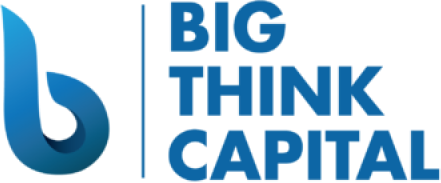The Impact of Ascent in Fed Interest Rates on Small Business Financing: A Tailored Guide on Adapting Your Capital Acquisition Strategy
Estimated Reading Time: 6 minutes
- Understand the implications of rising Federal interest rates on small business financing.
- Learn about the effects on various funding options such as SBA loans and MCAs.
- Implement strategies to monitor credit scores and manage cash flow effectively.
Table of Contents
- Understanding Changes in Federal Interest Rates
- Implications for Small Business Financing
- Impact on Different Funding Options
- Strategies for Adapting Your Capital Acquisition Strategy
- Conclusion
- FAQ Section
Understanding Changes in Federal Interest Rates
The Federal Reserve adjusts interest rates to influence economic activity. Raising interest rates typically aims to curb inflation, but it can have ripple effects throughout the lending market. In 2025, the Fed announced a series of rate hikes as inflation continued to remain above the target rate of around 2%, resulting in higher costs for borrowing across the board.
Implications for Small Business Financing
- Increased Cost of Borrowing: Higher interest rates directly increase the cost of loans and credit lines, leading to higher monthly payments and an overall increased financial burden.
- Stricter Lending Standards: As financing becomes more expensive, lenders may tighten their lending standards, making it more challenging for small businesses to qualify for loans. Increased scrutiny on creditworthiness is likely, which can affect smaller businesses or those with less established credit histories.
- Cash Flow Management: With increased borrowing costs, businesses must be vigilant about their cash flows. A tighter cash flow can restrict operational capabilities or growth opportunities, underscoring the need for effective financial management strategies.
Impact on Different Funding Options
Different types of financing feel the impact of rising Federal interest rates in various ways. Understanding these effects can help you choose the right funding avenues for your business needs.
SBA Loans
SBA loans have long been a popular choice for small businesses due to their favorable terms and relatively low-interest rates. However, with rising interest rates:
- Higher Interest Rates: The interest rates on SBA loans are typically tied to the prime rate, which means that as the Federal rates rise, so will the rates on these loans.
- Easier Qualification: In some cases, the U.S. Small Business Administration may adjust its programs to help businesses maintain access to affordable financing, but qualifying still requires careful preparation of documentation and a solid credit profile.
Merchant Cash Advances (MCA)
MCAs provide small businesses with quick access to capital in exchange for a percentage of daily credit card sales. While they offer speed and accessibility, they also come at a cost:
- Higher Costs: As interest rates climb, the effective cost of MCAs may also rise sharply because they often carry high factor rates.
- Cash Flow Impact: Daily repayments based on revenue can strain cash flow management, especially in a higher-rate environment where margins are tighter.
Equipment Financing
For businesses investing in necessary equipment, equipment financing options may also present challenges:
- Rate Increases: The costs associated with financing equipment are influenced by interest rates, affecting the overall cost of ownership.
- Longer Terms: To offset the cost of borrowing, businesses might consider longer terms, which may lead to increased total interest paid over time.
Business Lines of Credit
Lines of credit are crucial for managing operational expenses and unexpected costs:
- Availability of Credit: Like other forms of lending, the costs associated with accessing a line of credit will rise with higher interest rates, potentially making it more challenging to secure this flexible funding option.
- Strategic Usage: Small businesses need to be strategic about using credit. Only drawing on lines of credit for emergencies or essential operational expenditures while ensuring timely repayments can keep overall interest costs manageable.
Strategies for Adapting Your Capital Acquisition Strategy
To navigate the challenges posed by rising interest rates, small business owners must adopt proactive strategies that focus on maintaining healthy finances and optimizing funding options.
1. Regularly Monitor Your Credit Score
Your credit score is a pivotal factor in obtaining financing. Here are key actions you can take:
- Check for Errors: Request free annual credit reports and check for inaccuracies that may negatively impact your score. Correcting errors can improve your creditworthiness.
- Manage Credit Utilization: Aim to keep utilization under 30% of available credit. This indicates responsible credit usage, likely improving your score.
- Timely Payments: Ensure all debts are repaid on schedule to foster a positive payment history, which plays a significant role in your credit score.
2. Improve Cash Flow Management
Maintain healthy cash flow to withstand fluctuations in borrowing costs:
- Budgeting: Implement a comprehensive budgeting process that tracks income and expenses closely. Identify areas where costs can be reduced or optimized.
- Forecasting: Create revenue projections to predict cash flow needs. This helps you plan for seasons of lower income or unexpected expenses.
- Invoice Management: Streamline invoicing processes to ensure timely customer payments. Consider offering discounts for early payments to encourage faster cash flow.
3. Evaluate Your Financing Options Wisely
Not all financing sources offer the same advantages and costs. Be strategic with your choices:
- Compare Rates and Terms: Always shop around for the best loan terms and interest rates, considering total costs, not just monthly payments.
- Know Your Needs: Clearly define what you need funding for, whether for equipment, operational expenses, or inventory, to choose a suitable financing option.
- Use Alternative Lending Wisely: For immediate cash flow needs, consider alternatives like MCAs but be conscious of the costs versus your repayment ability.
Conclusion
With the Federal Reserve’s recent interest rate hikes, the landscape for small business financing is rapidly evolving in 2025. Business owners must stay informed and adapt their capital acquisition strategies accordingly to mitigate the impact of these changes. By regularly monitoring credit scores, managing cash flows, evaluating financing options smartly, and proactively planning for the future, small businesses can still thrive despite challenges.
At Big Think Capital, we’re committed to aiding small businesses in navigating these waters effectively. Our suite of funding solutions, including working capital advances, SBA loans, merchant cash advances, equipment financing, and lines of credit, is designed to meet the unique needs of small businesses.
For more insights and personalized assistance tailored to your financial goals, visit us at bigthinkcapital.com or reach out to one of our funding experts today. Let us help you secure the funding necessary to grow your business in a changing economic landscape.
FAQ Section
Q: How do rising interest rates affect my loan eligibility?
A: Rising interest rates can lead to stricter lending standards, making it more challenging for some businesses to qualify for loans.
Q: What can I do to improve my credit score?
A: Regularly check your credit reports for errors, keep credit utilization under 30%, and make timely payments.
Q: Is it worth considering merchant cash advances?
A: While MCAs provide quick access to capital, they can carry higher costs, so consider their impacts on your cash flow.






